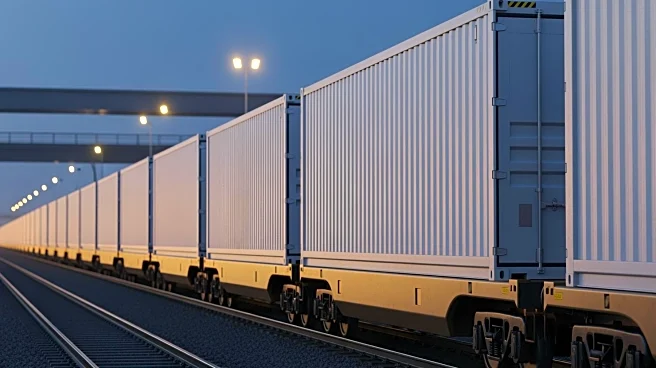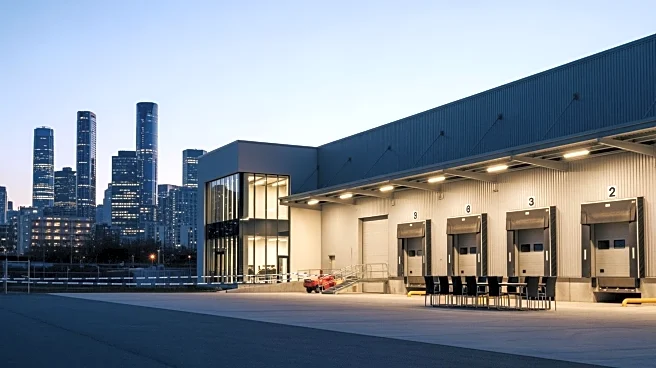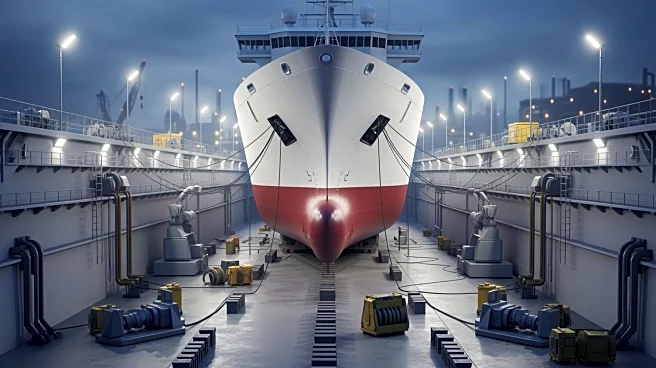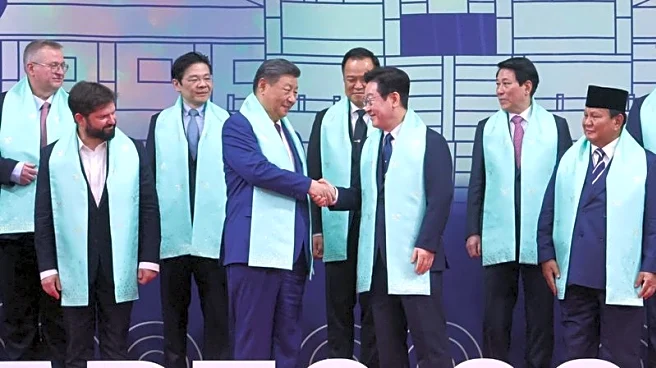What's Happening?
U.S. freight railroads have significantly invested in intermodal and multimodal transportation, aiming to enhance efficiency and sustainability. Since 1980, approximately $840 billion has been allocated
to capital expenditures and maintenance for locomotives, freight cars, tracks, and infrastructure. This investment has led to improved reliability and service consistency, with notable projects like the $100-million expansion of the Patrick J. Ottensmeyer International Railway Bridge in Texas, which doubles cross-border trade capacity. The merger of Canadian Pacific and Kansas City Southern into CPKC has created a single-line railway connecting Canada, the U.S., and Mexico, reducing travel times. Additionally, Union Pacific and Norfolk Southern's agreement to form a transcontinental railroad promises greater efficiency. Intermodal transport is becoming more competitive with trucking, offering cost savings and reduced carbon emissions.
Why It's Important?
The transformation of intermodal transport is crucial for the U.S. logistics industry, offering a more sustainable and cost-effective alternative to traditional trucking. By reducing carbon emissions by about 75% and stabilizing rates, intermodal transport supports environmental goals and provides economic benefits. The mergers and infrastructure investments enhance connectivity and efficiency, potentially reducing congestion and improving supply chain resilience. This shift is significant for businesses seeking reliable and sustainable logistics solutions, as well as for policymakers focused on reducing transportation-related emissions.
What's Next?
As intermodal transport continues to grow, further investments in infrastructure and technology are expected. The industry may see increased adoption of artificial intelligence to improve visibility and predict delivery times. Legislative efforts, such as the Combating Organized Retail Crime Act of 2025, aim to address challenges like cargo theft. The ongoing development of inland ports and facilities like the Barstow International Gateway will further support the expansion of intermodal transport. Stakeholders, including logistics providers and shippers, will likely continue to explore hybrid approaches and partnerships to maximize the benefits of intermodal solutions.
Beyond the Headlines
The shift towards intermodal transport reflects broader trends in logistics and supply chain management, emphasizing sustainability and efficiency. The integration of AI and technology enhances visibility and control, addressing historical challenges in the industry. As companies prioritize carbon reduction goals, intermodal transport offers a viable path to achieving these objectives. The evolving landscape may also influence global trade patterns, as nearshoring and infrastructure improvements facilitate more efficient cross-border commerce.













